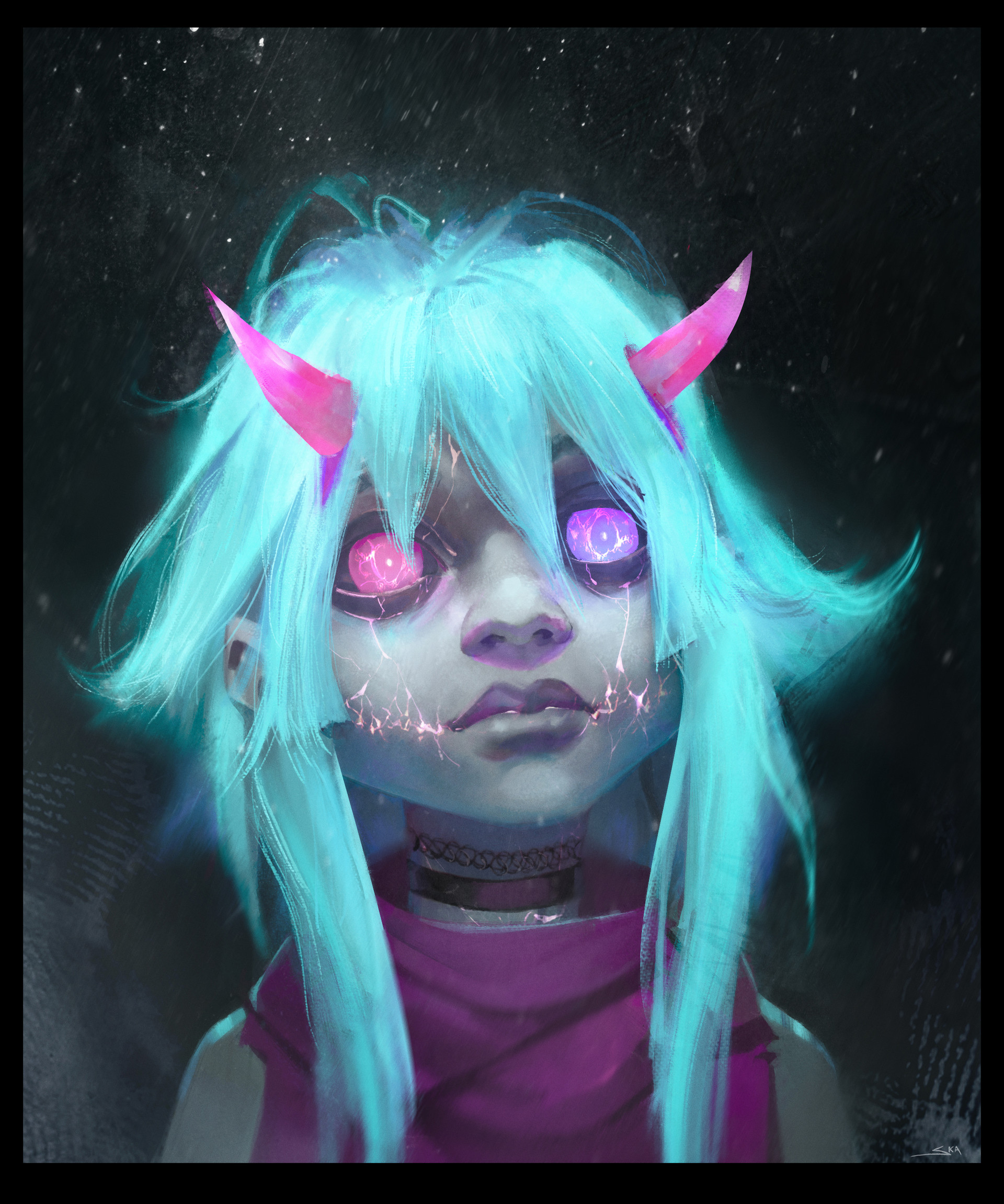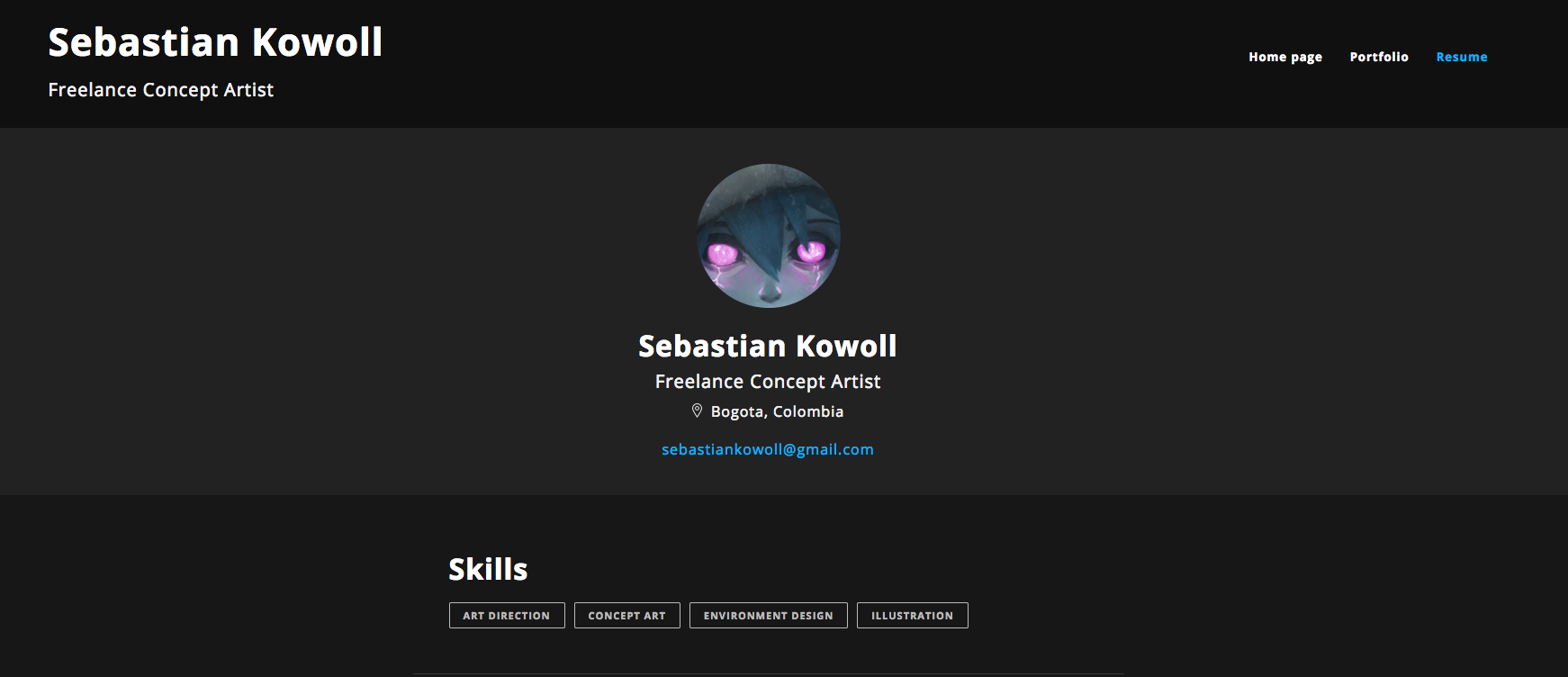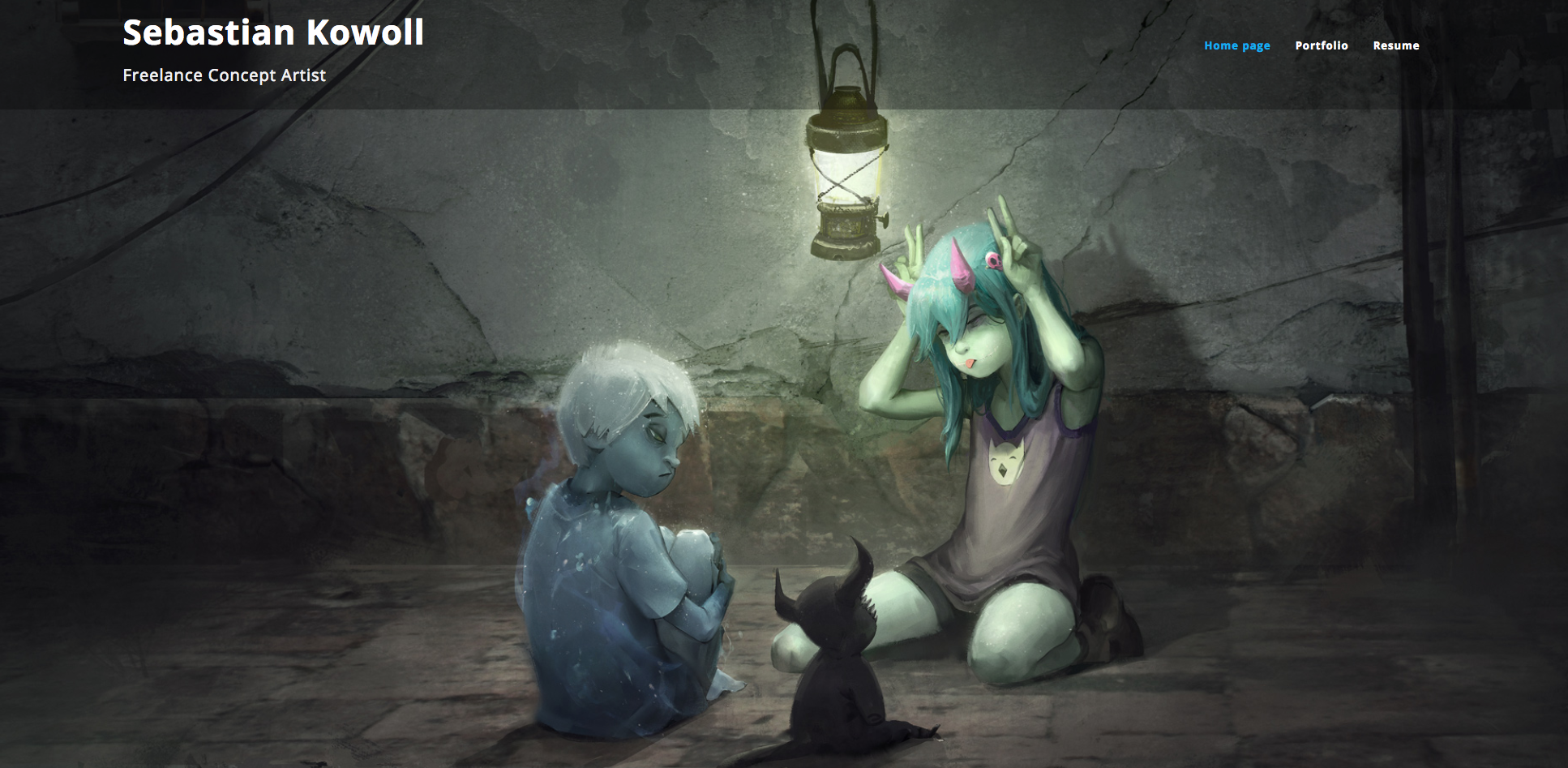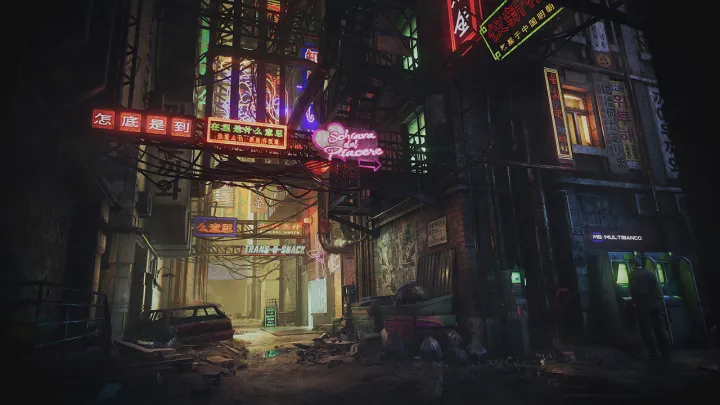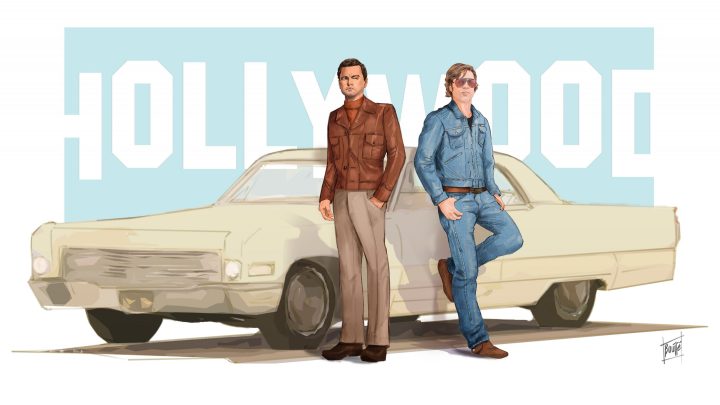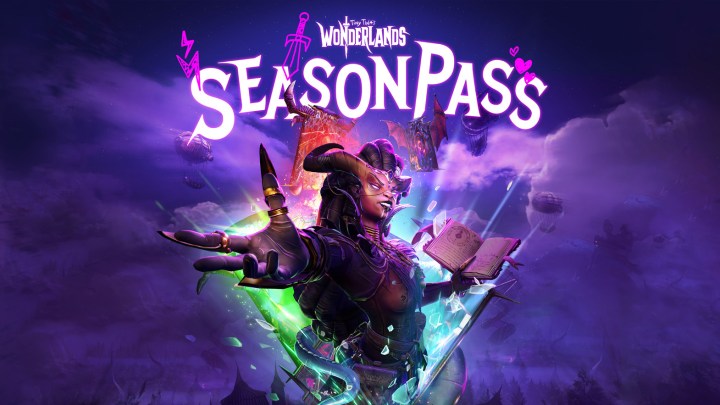 Sebastian Kowoll is a freelance concept artist for video games based in Colombia.
Sebastian Kowoll is a freelance concept artist for video games based in Colombia.
Check out Sebastian’s ArtStation-powered portfolio website.
For freelance artists, your ArtStation portfolio is often one of the first things a recruiter or potential employer will see so it’s important to put your best foot forward. He told us that “hands down”, what he loves is having complete control over his portfolio.
In this interview, Sebastian chats about his favorite personal piece, biggest challenges, portfolio insights and more.
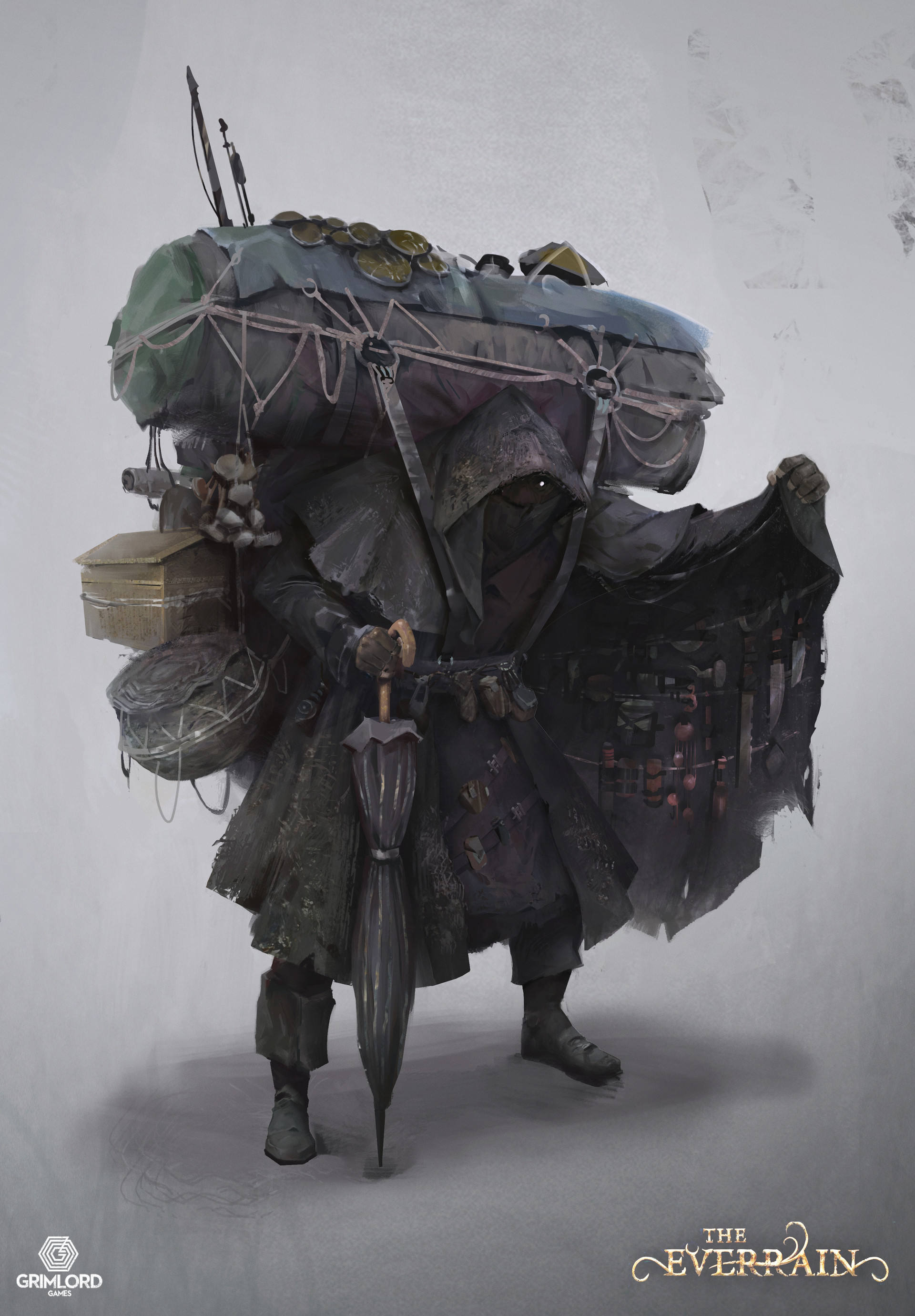
Tell us about one of your favorite personal pieces.
I’d have to go back to an old piece titled “
Reaper” which was done as a class demo. It is by no means the most original piece I’ve done, but it felt right at the time. It felt honest. It was precisely what I wanted to paint at that particular period. It represents the first step towards a project that, for lack of a proper title, let’s call “Demon Girls” which is just me exploring the act of painting through a particular and simple enough excuse.
I got into art because I wanted to make video games, particularly because of Ayami Kojima’s work on Castlevania. I’m also a big fan of Tim Burton’s early work and throughout my university days I used to just gratuitously emulate those references. After I got serious with art I kind of ignored them for a while. It was involuntary, but it happened, and this Reaper image was me allowing myself to go back to what made me tick originally. To return to my initial art motivators. In a way, I rediscovered myself with it.
Afterwards, I simply kept exploring her character, her world and giving myself freedom with it. It can be colorful, gray, dark, desolated – it doesn’t matter. I’ve also used the project as a means of incorporating lessons from studying old masters like Georg Saal and Knut Ewall: two personal faves.
What do you think makes a strong portfolio?
I would say it’s consistency in output. I don’t think there has to be style or thematic consistency (unless aiming towards a specific company). You could have hyper realistic images next to super graphic pieces and as long as both of them are telling of your abilities, they would only add to an artists’ array of skills.
I once heard a phrase that I keep close to heart when it comes to portfolios: a chain is only as strong as its weakest link. You could have a portfolio consisting of 9 strong images and one really poor one: that weak one will become the bar for the portfolio. Best advice would be to make absolutely sure that your weakest link is a kickass image.
What training or experience brought you to the level you’re at now?
Putting in the hours of work after taking various courses over at CGMA and attending concept art workshops. I live in Colombia and the entertainment design scene here is in its baby stages. Along with a couple of friends of mine, we started
Blank in 2012 in order to set up concept art workshops like the ones happening in the rest of the world but in our country. We’ve gotten some world class AAA artists to come here and share their knowledge! I might be a producer in that case but that just means I’m the first attendee of them as well.
Then it’s all a matter of practice, self criticism and actual critcism: I always try to share my paintings with fellow artists in order to improve my craft
What are some of your biggest challenges as an artist?
Honestly, learning to be patient and dealing with my insecurities. There’s something beautifully honest about the word “painting” in English: it comes with “pain” etched within it. Basically, you can’t have a painting without pain.
In my case that translates to the constant self-doubt and second third and fourth guessing my choices. It’s a back and forth between me saying “this is looking kind of cool” versus “this just sucks big time”. That happens from the initial stages all the way to the final strokes, at which point patience, knowledge and practice should kick in and hopefully something good – a good painting – should come out of it. I think that’s where the hardship of painting lies, but also where we can find sincerity with our own work.
See more of Sebastian’s work on his portfolio website. To learn more about ArtStation Pro websites, click here.
 Sebastian Kowoll is a freelance concept artist for video games based in Colombia.
Sebastian Kowoll is a freelance concept artist for video games based in Colombia.
